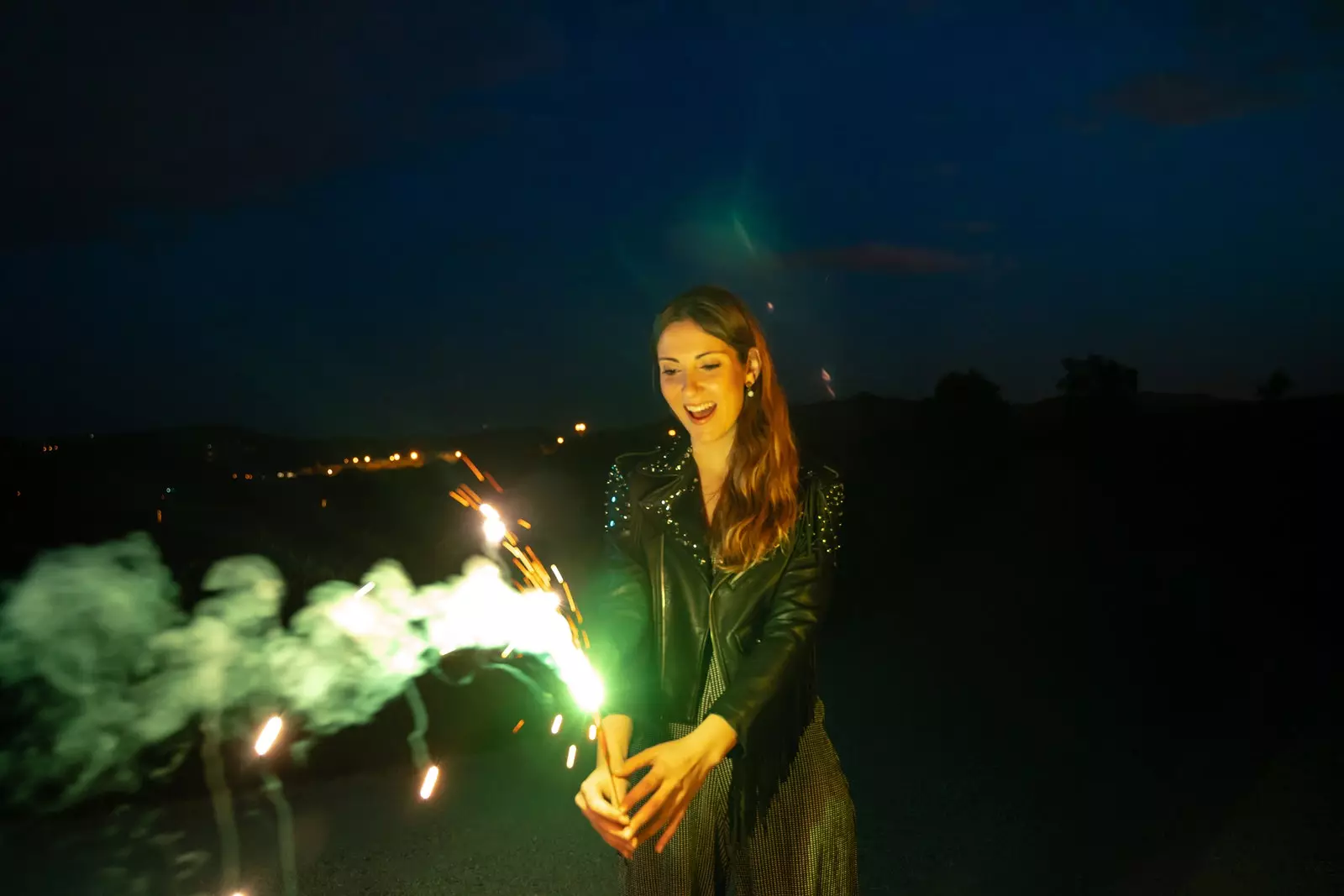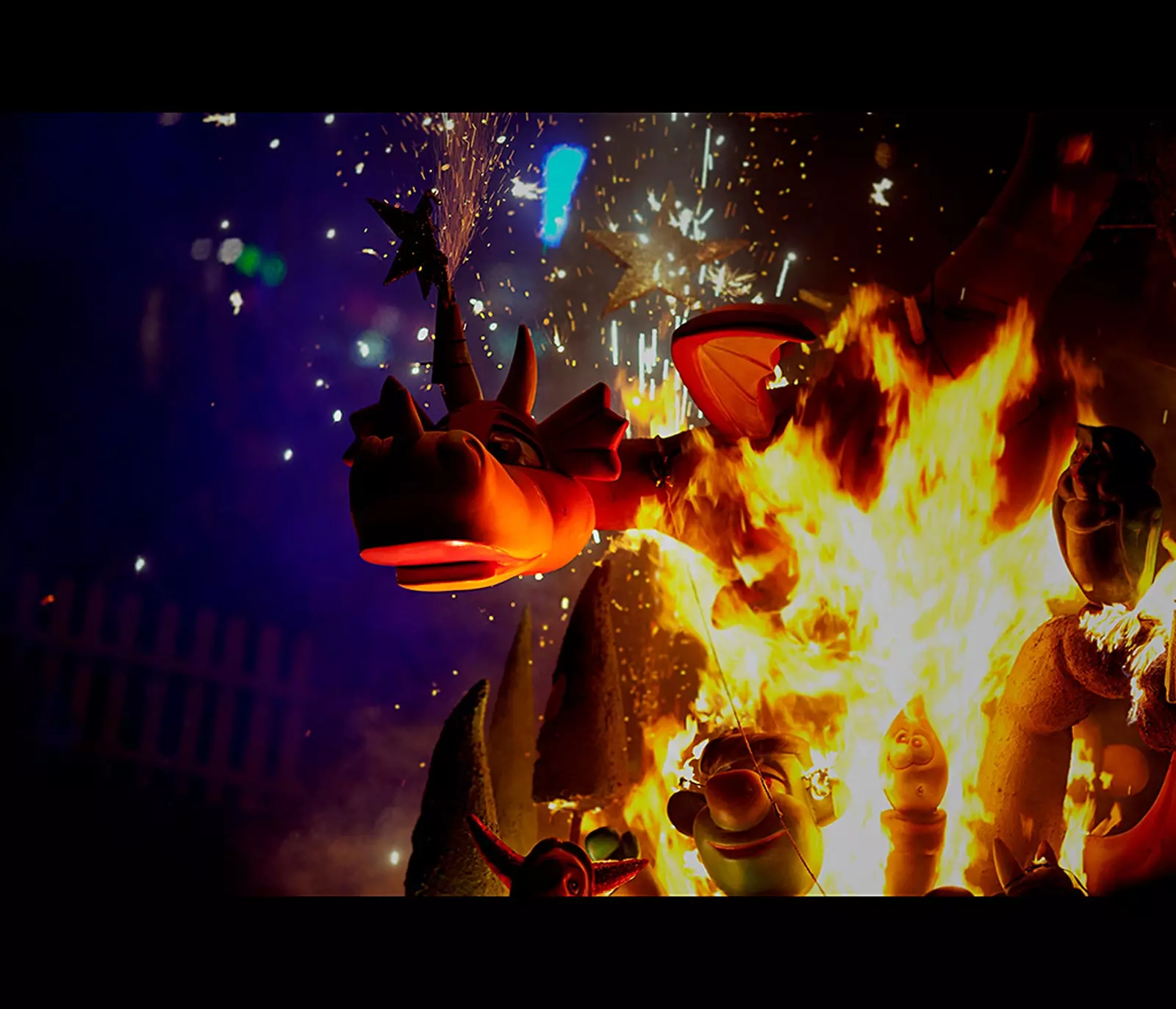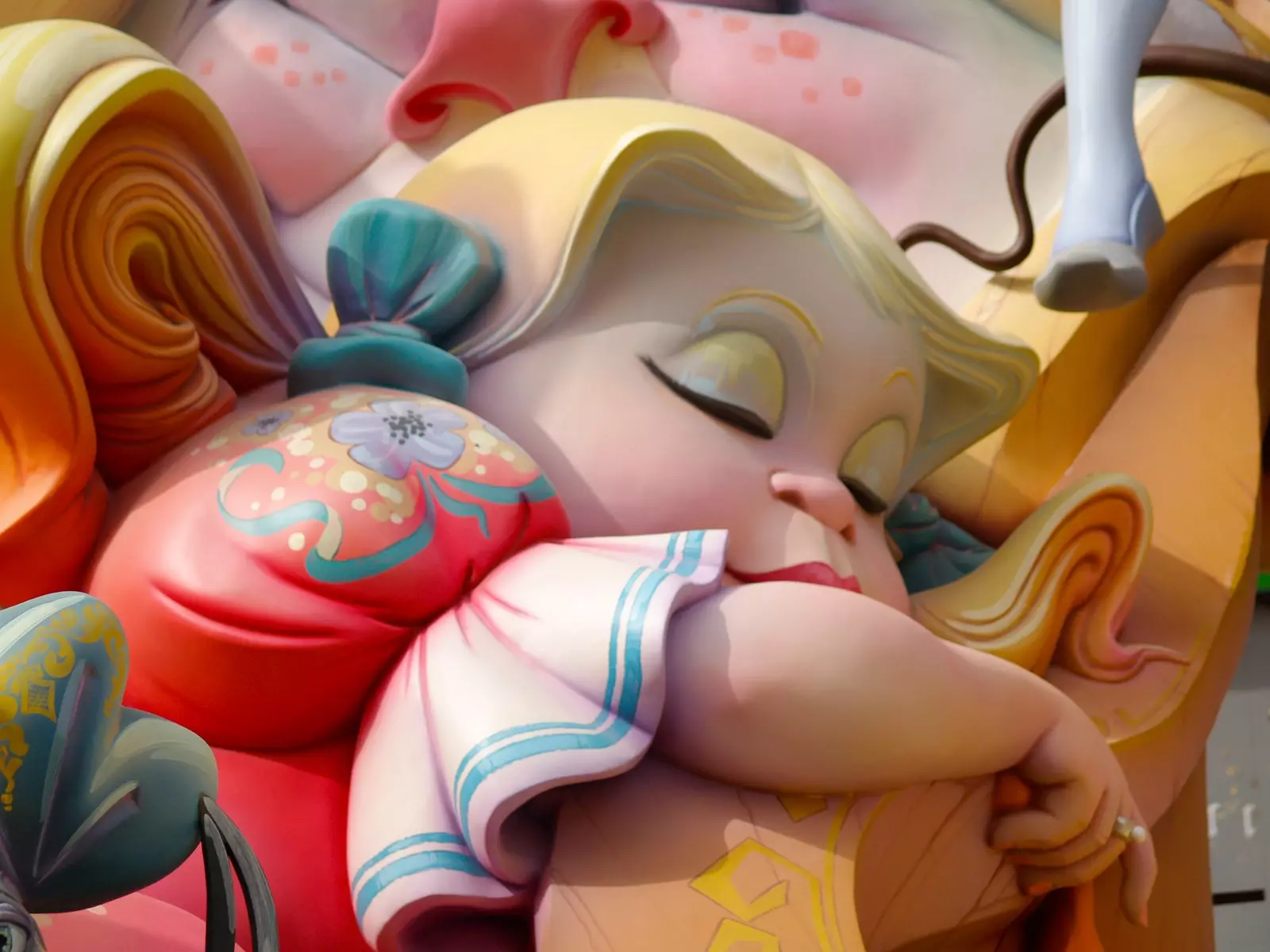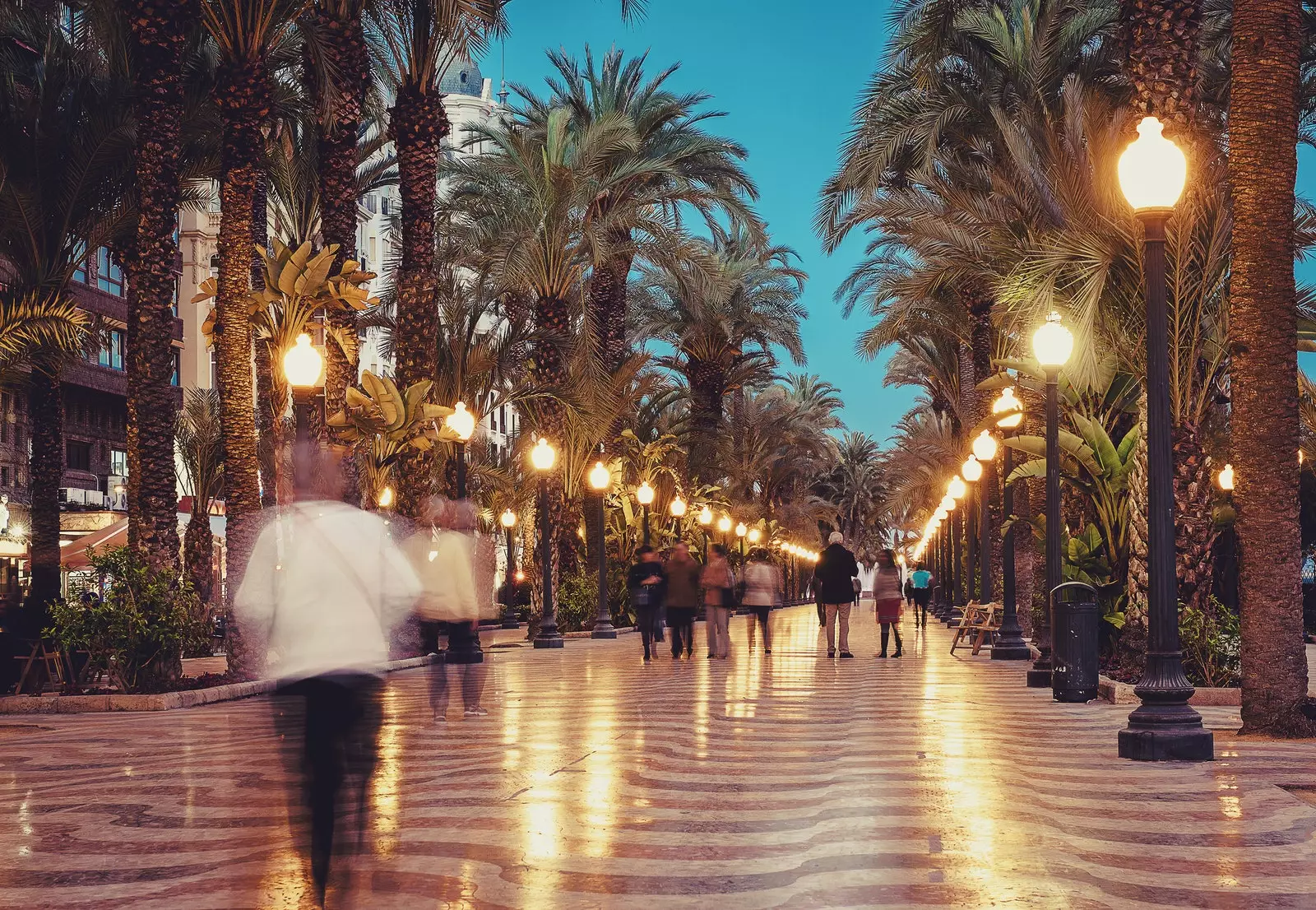“To the llum de les Fogueres/what is the most beautiful party”. If you have ever been able to enjoy the bonfires of Alicante , you will have heard the locals sing at the top of their lungs the benefits of their terreta and their impressive patron saint festivities.
PARTY OF THE NEIGHBORHOODS, OF THE SOLSTICE AND OF THE SATIRE
The Bonfires of Alicante, which are celebrated between the days June 20 and 24 to commemorate the Summer Solstice (although we know that officially this date is the 21st, not the 24th), they have been officially celebrated in the city since 1928 , although its origin is much older: the farmers of the area celebrated the longest day of the year to harvest the harvest and the shortest night "to destroy evils" with bonfires, firecrackers and pyrotechnics.
This tradition passed from the garden to the streets of the city , where the mayor ordered in 1822 "... that bonfires not be lit in the streets, let alone shots or rockets fired in the San Juans night and successive”, under penalty of large fines.
Not for that reason they managed to put an end to the tradition, of course, and in 1881 the people of Alicante displayed their burlesque and mischievous nature by taking advantage of the fact that the side had not been published due to oversight, going out to the streets to fill them with fire, laughter, traditional dances to the sound of the dolçaina and the tablet and the now traditional ninots , who on that night had as the first target of their satire those who were not appreciated in the neighborhoods. The festes del carrer took to the streets, and they continued to do so despite the prohibitions.

Since its inception, the Bonfires of Alicante have been closely related to pyrotechnics and fireworks.
It wouldn't be until 1928 that the Bonfires of San Juan would take their official character from the hand of the society Alicante Attraction , that defended that his fire festivals deserved as much respect as the Fallas in Valencia and that they would be a great tourist attraction for the city.
In June of that year the first acts were carried out and since then bonfires They have been unstoppable. Only two events interrupted the celebrations: the Spanish Civil War (in the years 1937 and 1938) and the COVID-19 pandemic (which left the city without celebrations in 2020 and 2021).
CULTURE FOGUERA
The patron saint festivities, therefore, have been linked to the life of the neighborhoods since their inception. To help us get to know them from the inside, Condé Nast Traveler speaks with Tere Company, journalist and fire pit to the bone , to guide us through the ins and outs of Alicante's patron saint festivities.
Tere has been participating in the Bonfires all her life. Her parents met at Sèneca-Buses , one of the most central in the city, but her first bonfire was another. “ In the end they are still groups of people ”, she says when explaining that in the 80s there was a split and part of the members of Sèneca-Autobusos formed Port d'Alacant , a very special group because She 'planted' (that is, built) her bonfire directly on a platform in the sea.
“The first time I went out to parade, I did it in a carrycot . I was two or three months old and my parents wanted to do without carts, as it was a traditional parade,” she says. When she was 6 years old, her family, among other members of the bonfire, rejoined Sèneca-Autobusos. More than two decades have passed, and since then she has not let go of the mantle of festive.
For those outside the parties, the bonfires last four days, but for the festers, the work is never done . "The holidays are at the end of June, then we have a couple of months of vacation and in september we start again ”, she tells.
It's not just the events of the parties, which are there throughout the year : playback contest between bonfires, Christmas carol contests, the construction of bonfires, the edition of llibrets... A bonfire is also a neighborhood association , in some way. "People propose things that interest them."
As examples, she tells that a chorus , which performs both for the Christmas carol contest and in other local settings, for example, the neighborhood parish, or a sewing workshop to prepare the suits of Alicante themselves. “There are many families who point the children to a bonfire so that they have activities to do, socialize and so the parents have time for them,” she says with a laugh, “but in the end they all end up getting involved and even the grandmother parades”.
HOW ARE THE BONFIRES DAYS FOR THE HOLIDAYS?
Even in the Bonfire period, the agenda of the festers is different. “ For us the party starts much earlier , with the presentation of the bonfires, the election of the bellea del foc and the plantá [the construction of the monument]. The heavy work is done by the artists, but we help where we can, carrying things and placing pieces”.
They are exhausting days, but very entertaining. "In the racó [the space in which the bonfire is built] there is always something to do: parades and parades around the district, go see the mascleta or other bonfires, children's parties, a meal, a have lunch , a dinner, the offering of flowers, the verbena”, explains Tere. “ If you want, you can spend 24 hours a day doing things, in the end it's a matter of what your body can take”.
This expression is not rhetorical: Tere remembers and remembers that his record is probably in sleep 12 hours in all that week . "She was 15 years old, she was an older lady and I felt very adult," she recalls with a laugh. “It's tiring, but in the end you've been working for this moment all year and you want to live it to the fullest. The people who are from Hogueras live it with great intensity”.
The typical calendar of a holiday begins with the wake up : at 8 in the morning, the neighborhood wakes up to the sound of music bands, firecrackers and firecrackers . “Some are more into waking up before going to sleep, there are tastes for everyone”, she says with a laugh. "For some, waking up is bedtime."
Later, back to the racó, to drink a typical Coke, a beer , the act that plays that day, and at night they will be waiting for the tables of the racó to rejoin the members of the bonfire or other people who are taking advantage of the festivities. “ It's a very social party ”, tells Teresa.
The official end of the festival is known as cream , in which that monument that has been created with so much love and effort is delivered to the flames . A solemn moment that also has its fun part, when the youngest participants in the event shout at the firefighters who control the advance of the flames with their water jets so that they can be watered with them. The banya It is a perfect finishing touch for a week of fun and warmth.

In the Bonfires of Alicante, as in the Fallas of Valencia, the culmination of the festivities is the burning of the monuments.
FIRE, ART AND MUSIC
For Tere, there are three fundamental pillars for the parties: gunpowder, monument and music . Regarding the latter, Tere feels that it is the aspect that is most often overlooked, but there is a strong relationship between the music bands and the patron saint festivities of Alicante . “Outside the world of Bonfires, it is music that seems to have become a bit out of date, but the world of parties feeds a lot on them”.
One of the aspects that he emphasizes the most is that the Hogueras de Alicante are one of the few spaces in which music bands can continue to innovate and create in older genres, such as the pasodoble . "When a person has been at the stake for more than 50 years, they usually create a song for him," as is the case with his father.
Even so, music bands also add touches of modernity where they can. “In the official race they tend to stay more traditional, but outside, during dinners or other less institutional events, they play things like Mediterranean, from La Fumiga. They still have a lot to contribute ”, he explains.
Another of the great pillars of the Hogueras de Alicante also has a great relationship with the artists: the construction of the monument . “There are as many relationships between bonfires and artists as there are bonfires and artists”, explains Tere. “ Each bonfire develops the project in a unique way”.

The 'ninots' are extremely detailed and careful artistic works, although their destiny is to be consumed by flames.
Tere tells that at her bonfire artists have almost total freedom, even in those cases where there is some ninot that arouses controversy . "The artists know the styles that the bonfires like, and if they ask for directions, we give them, or we give them information about current events in Alicante, but otherwise they have complete freedom."
Tere gets emotional when talking about one of those artists, Manuel Algarra , who has worked with them for two decades intermittently and who he passed away a few months ago, with this year's bonfire project already started.
“A relationship of closeness and affection is created beyond the professional. This year we are planted by three artists, Manuel Algarra, Jose Gallego and Toni Perez . Manolo was our friend, last year's llibret was from his artistic tradition, and we wanted to finish his project”.
MEMORY OF THE CITY
But not everything is hubbub, pyrotechnic shows and music at these parties: the bonfires also do a job of historical memory through the so-called books . “Traditionally”, says Tere, “the party booklet was a little book in which the bonfire united a sketch of the bonfire, advertising for the sponsors, some decorative text, the party calendar... Today it has evolved into some monographs of between 200-300 pages that analyze an aspect of the festival or Alicante culture”.
A job of compiling the history of the city that, in her opinion, very few institutions would be capable of doing, and that is a reference of graphic design within the town for the care and innovations that are made year after year in the format . "There are llibrets of everything," she says. Some examples of topics covered are the artists of Bonfires and Fallas , the construction of the monuments, the music bands, relevant figures of Alicante culture such as photographers, journalists or writers, but also the historical development of the festivals and their most emotional aspect.
The negative part? They are a rather internal tradition . “The llibrets usually stay for the participants of the Bonfire and the sponsors… It is actually a shame, because it is a written testimony and a spectacular anthropological work”.
THE FOC BELLE
When asked how he would define the role of the bellea at parties, Tere laughs. “It is very difficult to explain, the only way you have to explain it is to feel it and live it”. Leaving aside the most sentimental plane, she says that the beauty she becomes the representative of the bonfire, a figure of queen of the festivities not very different from the one we see in other patron saint festivities.
“There's a lot of girls to be for beauty it's a dream : they have been living the party since they were little and they see the beauties, on the one hand, as a transition to adulthood, but also that year everything revolves around you , a year in which they invest a lot of effort, a lot of time and a lot of money, illusion and desire”.
The beauties have an institutional role within the festivals : in acts such as the presentation of the bonfires they represent their racó, they wear a special costume for the first time… “The day the bands enter, in the first parade, the band is going to pick you up at your house and you go out dressed and the whole bonfire applauds you . From a slightly more critical reading, it has things that are a bit old, but you also have to understand them from tradition and illusion. For many girls, it's the closest they'll ever get to being a princess.”.
Not by following tradition have they lost their critical sense. Since the festers themselves there has been a reflection on aspects of the figure of the bellea. “Before she was the only female reference within the party and this is changing . Without going any further, right now the president of the Federation of Bonfires is a woman [Toñi Martín-Zarco], there are many presidents of bonfires, many women in the management teams... A few years ago, a pretty face was more sought after to accompany the institutional acts; Today, one more model of girls who live and enjoy the party is looking for”.
THE ROLE OF BONFIRES AS A NEIGHBORHOOD PARTY
The Bonfires of Alicante were born as a social, neighborhood, unity party between neighbors . In its beginnings, people simply brought tables and chairs out onto the street, reclaiming the public space for their celebrations.

During the Hogueras period, the summer nights in Alicante are filled with animation.
Today is the racó ('corner' in Valencian) who plays that role: around the monument 'planted' in the street, the bonfire receives permits to place tables and chairs where the members of the bonfire, together with their neighbors, family or friends (or anyone who wants to rent a table), enjoy the warm summer nights and the animation of the party.
"There are racós for all tastes," says Tere. “Calmer, more lively, with a DJ, with a stereo, with a bit of everything… One of the cool things about racó it is that this way, apart from bringing together the festers and the people who simply want to enjoy the party, it is that it allows to finance the monuments”.
That yes, Tere recognizes a certain loss of racó as a neighborhood meeting place . "Before, people would join the bonfire in their neighborhood to socialize." Tere is talking about the 60s and 70s, when Alicante experienced an enormous growth in its population . Since then, certain traditions and the more neighborhood aspect of the bonfire have been lost.
A part of this phenomenon can be attributed to the festive organizations themselves. “During the 1980s, the parties turned a little more inward, towards the bonfires themselves, and less towards the neighborhood ”. And it is normal: although the work of the festival commissions is altruistic and affects the entire city, it is still an enormous job that the creators want to enjoy.
Even so, Tere points out that our society is experiencing a phenomenon of individualization, due to many factors. “The same thing happens in associationism, for example. We no longer relate to those closest to us ”. Part of the problem, in her opinion, is also the loss of local trade . "Before, the butcher, the greengrocer was also at the stake... Now many businesses belong to large multinationals and that social union does not exist."
THE FUTURE OF BONFIRES
And what does the future hold for the patron saint festivities of Alicante? Teresa points out that the pandemic has been a hard blow : Many bonfires have lost collaborators and sponsors, putting their viability at risk for years to come. An example has been, precisely, that of Port d'Alacant, which this year it has planted on land due to the impossibility of affording the maintenance of the platform at sea.
Not only at the sponsorship level: the pandemic has also taken its toll on the individual pockets of bonfire members , and when the need presses, superfluous expenses, such as membership of a festive group, are among the first to be renounced. A shame, but understandable.
Tere believes that, for the survival of the Bonfires of Alicante, it is necessary that both the institutions and the general public value more the positive effect that the festivals have in the city . "During those four days, the Bonfires affect the entire city at an economic level." And wasn't that the goal of Alicante Attraction almost a hundred years ago, when they claimed the Bonfires of San Juan not only as a tradition in the area, but as a tourist attraction that would boost the city's economy?
We hope that, although the future of the holidays may seem less than favorable today, the Bonfires of Alicante find social and institutional support to guarantee their future . Festers as dedicated as Tere deserve that and much more so that we can all continue enjoying these festivals of fire, music and art for many, many years.
